A Walk on a Northern California Beach
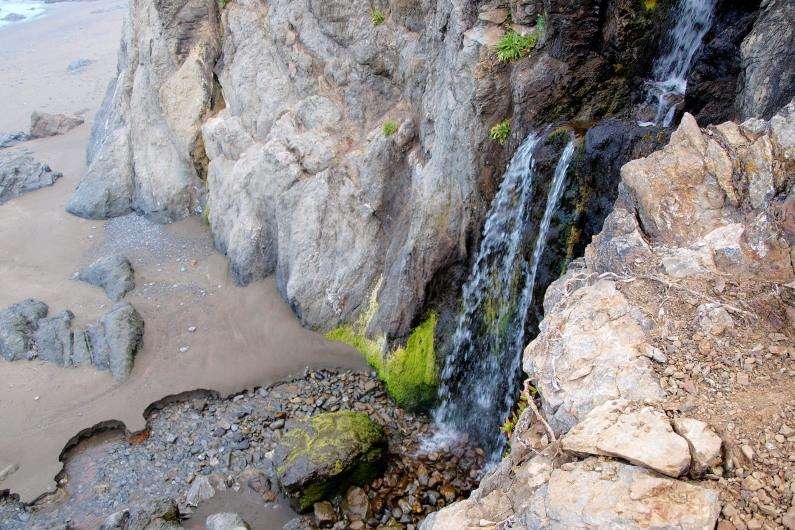
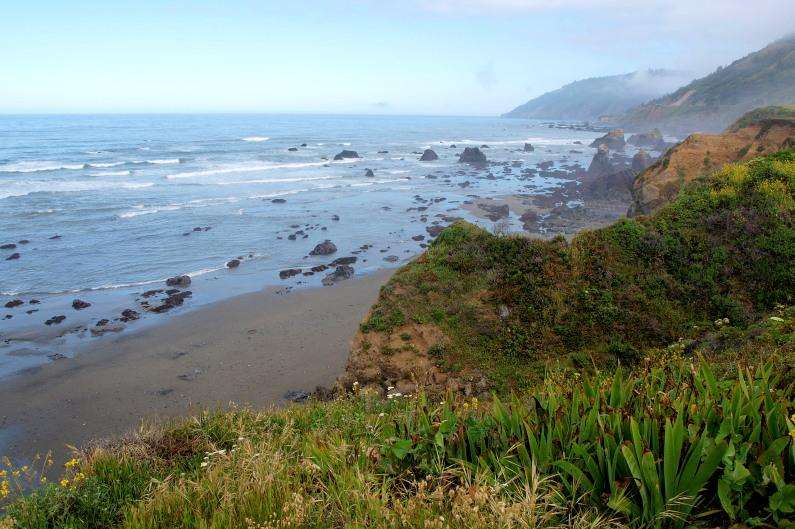 Beaches here are different from my native Florida; most of the shoreline is lined with cliffs, and the beach itself, the sand part, sort of starts and stops, with sand in coves and river mouths, and none out on the headlands. I decided I had sat around long enough so I grabbed the camera and headed out this morning after checking the tide table. I wanted to get down there when there was as much beach as possible, which was 8:00 AM today. There are two low tides a day, of course, but because of the shape of the coastline here one is much lower than the other.
Beaches here are different from my native Florida; most of the shoreline is lined with cliffs, and the beach itself, the sand part, sort of starts and stops, with sand in coves and river mouths, and none out on the headlands. I decided I had sat around long enough so I grabbed the camera and headed out this morning after checking the tide table. I wanted to get down there when there was as much beach as possible, which was 8:00 AM today. There are two low tides a day, of course, but because of the shape of the coastline here one is much lower than the other.
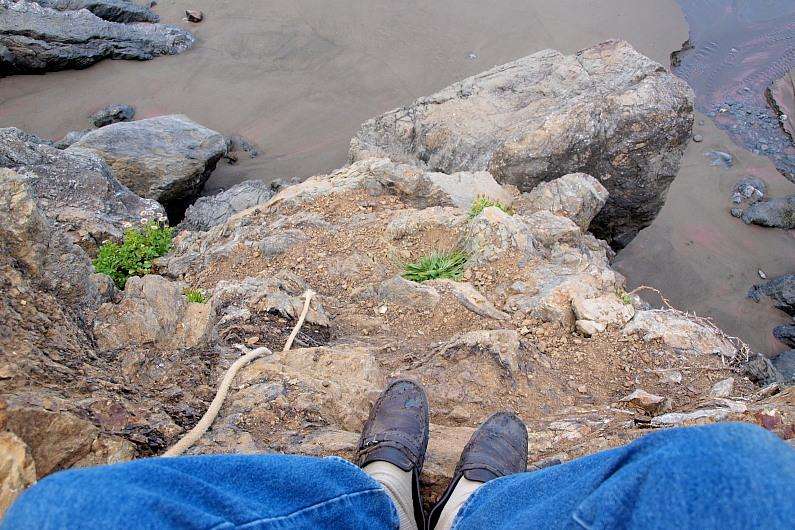
There's a stairway down to the beach maybe a half mile south of here in the state park, but i didn't want to walk that far and be around all those people, so I headed down the ravine near where we were parked toward the water. The path led along the cliff at first, then steeply downward and around a corner. And then I saw the rope. Following the increasingly steep path, I edged on down beside a small stream, but the rope ran out about twenty feet above the beach, so the last part was careful rock climbing and making sure I didn't bang the camera on the rocks.

The top half of these cliffs is a conglomerate of soil and angular stones, not smooth, water-rounded ones, which means they were deposited abruptly, maybe in a landslide and.or earthquake. The bottom half of the cliffs is bedrock, and the stream I was following angled down through the conglomerate part, turning into a ten foot waterfall over the bedrock down to the beach itself.

In addition to the streams coming down to the back, there are also seeps – groundwater coming out through the loose layers and above the bedrock. These are easy to spot because of the profusion of terrestrial plants down here close to the water. Mosses, algae mats, and vascular plants form bright spots of green along the cliff face wherever these seeps are present.
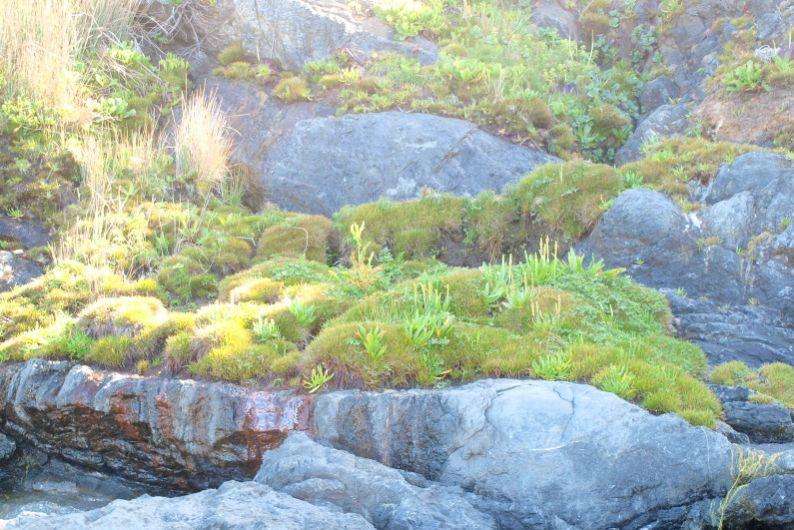
 The sea otters here come up and drink out of these seeps and streams, so it's fairly easy to spot their footprints in the sand where they amble up from the ocean to get their fresh water needs met. They must get up earlier than I do because all I saw was footprints, not actual otters.
The sea otters here come up and drink out of these seeps and streams, so it's fairly easy to spot their footprints in the sand where they amble up from the ocean to get their fresh water needs met. They must get up earlier than I do because all I saw was footprints, not actual otters.
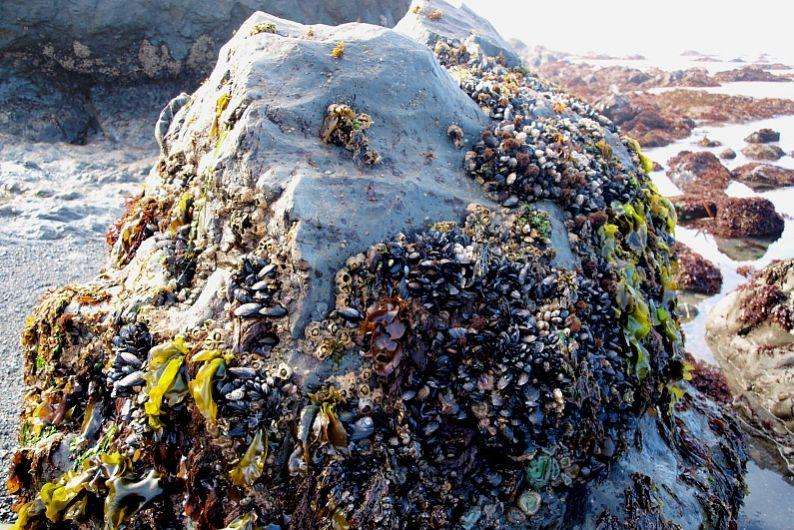 I walked north up the beach toward some rock formations. This was dead low tide, so the rocks nearest the water were covered with kelp, mussels, sea anemones, and other intertidal life, The only moving thing I saw, though, were some marine isopods scurrying around, maybe an inch long.
I walked north up the beach toward some rock formations. This was dead low tide, so the rocks nearest the water were covered with kelp, mussels, sea anemones, and other intertidal life, The only moving thing I saw, though, were some marine isopods scurrying around, maybe an inch long.
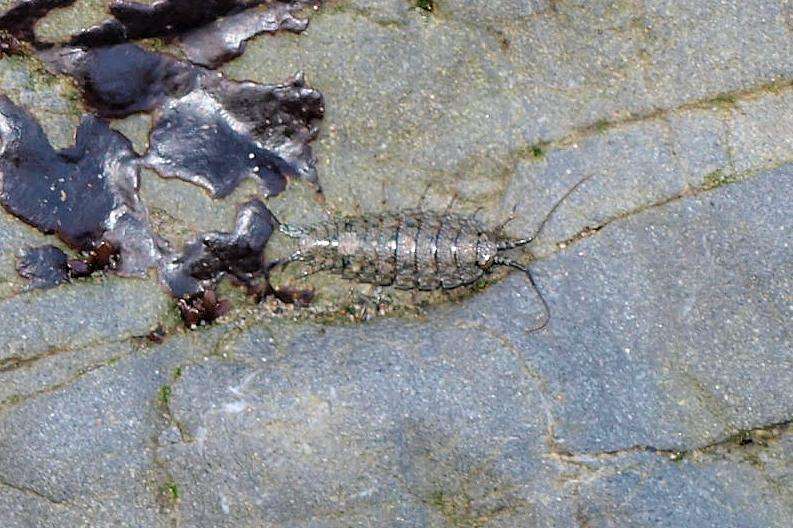 This isn't really a tidepool beach, more like isolated rocks with sand in between them, and the closer to the water the rocks were, the more they were polished smooth by the wave action. What life there was clung to the crevices and niches of the rocks, because they have to live here all year, through the winter storms.
This isn't really a tidepool beach, more like isolated rocks with sand in between them, and the closer to the water the rocks were, the more they were polished smooth by the wave action. What life there was clung to the crevices and niches of the rocks, because they have to live here all year, through the winter storms.
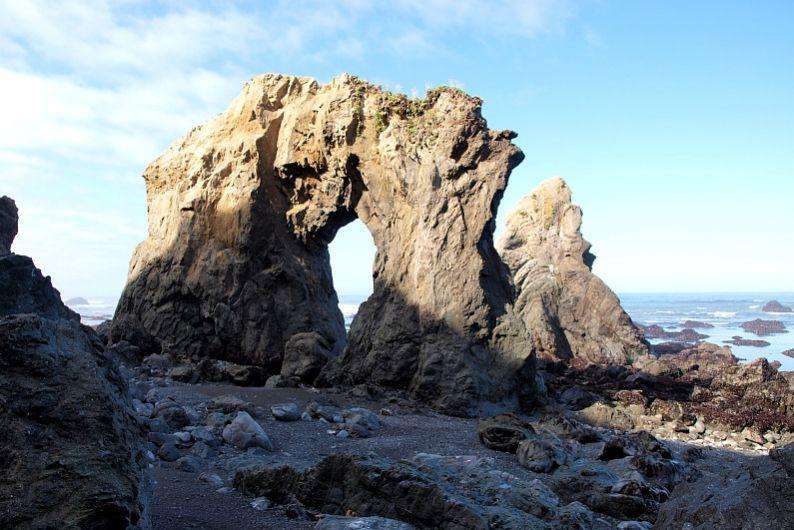 The rocks erode in strange shapes, I found an arch not too far north of where I came down to the beach, close by several other tall rocks in what was once a headland but is now in the process of being eroded away. After clambering over the rocks to get through this congested area, the beach opened up again.
The rocks erode in strange shapes, I found an arch not too far north of where I came down to the beach, close by several other tall rocks in what was once a headland but is now in the process of being eroded away. After clambering over the rocks to get through this congested area, the beach opened up again.
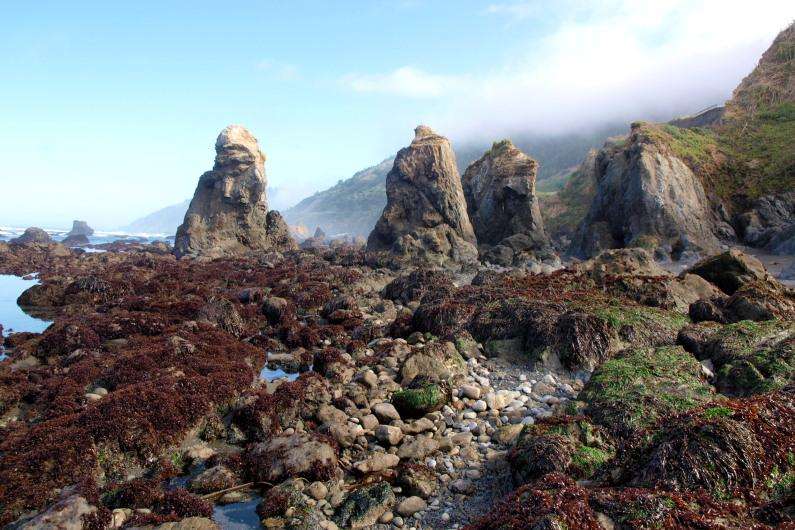 I went on down a bit further and then retraced my steps to the waterfall, the rope, and the precipitous path back up to the top of the cliff. Going up is always easier than coning down for me, and soon I was back up top, a bit out of breath, but without any unfortunate missteps. I think I'll take the rest of the day off after my exertions. That's enough nature for one day.
I went on down a bit further and then retraced my steps to the waterfall, the rope, and the precipitous path back up to the top of the cliff. Going up is always easier than coning down for me, and soon I was back up top, a bit out of breath, but without any unfortunate missteps. I think I'll take the rest of the day off after my exertions. That's enough nature for one day.

Great photos. Any idea what the ocean temp was?
Absolutely stunning photos and entrancing narrative. Thanks for sharing, Campskunk!